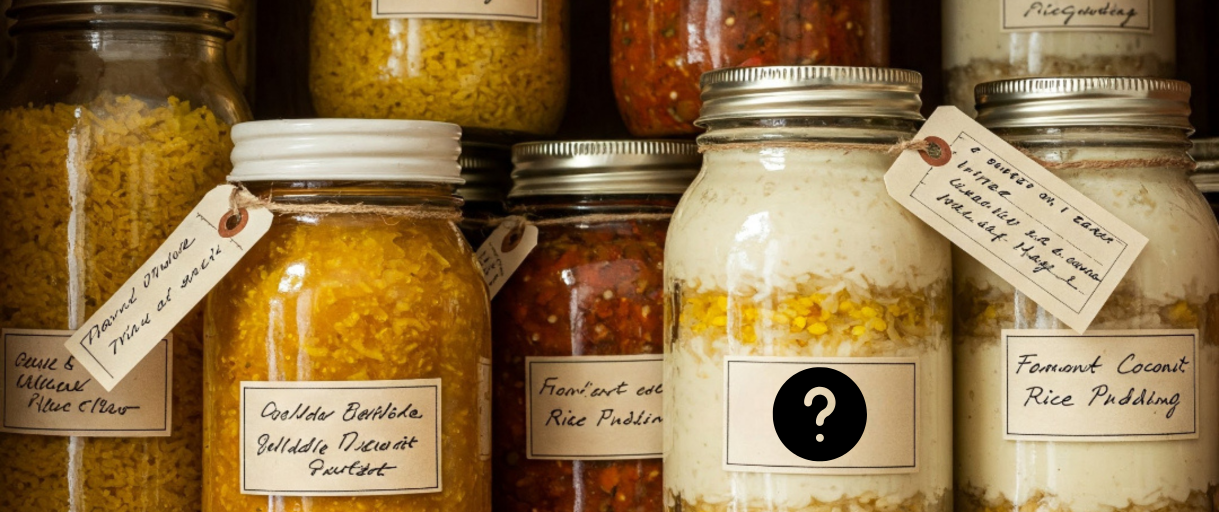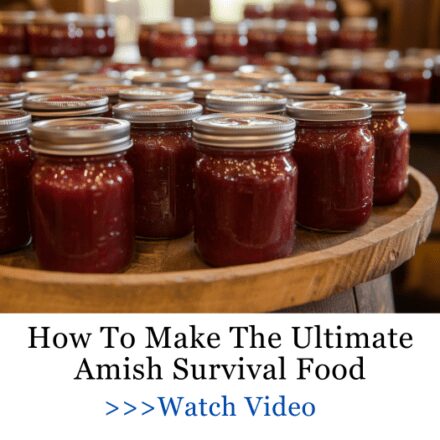When stored right, rice can outlast just about every other grain in your pantry without losing its bite or nutrition. But what if I told you that plain white or brown rice in Mylar bags is just the beginner level of what’s possible?
For generations, homesteaders, pioneers, and off-gridders have been preserving rice in ways that go far beyond the basics, turning it into full-blown, shelf-stable meals that stay fresh for years. Some of these methods are centuries old, passed down through families. Others are modern adaptations you won’t find on the average prepping blog.
You don’t need a freezer to keep these rice meals fresh. They’re built to last through power outages, emergencies, and whatever comes next.
Find out what they knew that most of today’s people don’t.
Rice Types That Outlast the Rest
Not all rice survives the test of time. Brown rice’s oily germ layer shortens its shelf life, but alternatives like black rice, forbidden rice, and wild rice defy this rule.
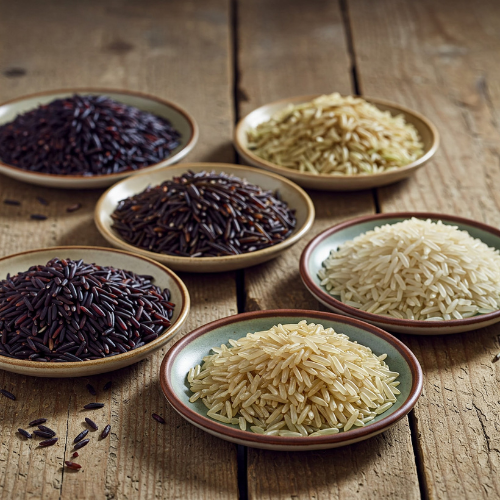
Black rice, for instance, stays edible for over a decade when stored correctly.
Its secret? Anthocyanins—the same antioxidants that give blueberries their color—act as natural preservatives. I keep a 5-gallon bucket of black rice in my root cellar, and after 12 years, it still cooks up sticky and sweet, perfect for porridge or savory stir-fries.
Forbidden rice, a heirloom variety from China, lasts just as long. Its nutty flavor and high iron content make it a staple in my emergency meals. Wild rice, technically a grass seed, outshines most grains with a 20-year shelf life if dried thoroughly and sealed in oxygen-free containers. I mix wild rice with dried venison and salt for a protein-packed trail food that’s survived countless hunting trips.
Storing these rices requires more than tossing them in a plastic bin. Here’s what works: Vacuum-seal grains in glass jars lined with beeswax for an airtight, rodent-proof barrier.
Beeswax prevents moisture ingress without the plastic taste, and glass won’t leach chemicals like some food-grade buckets.
If you’ve got a root cellar, exploit its natural coolness (ideally 40–50°F) and stable humidity (below 65%). I use a $15 hygrometer to monitor conditions and add lime buckets to absorb excess dampness. Avoid basements with temperature swings—they’ll condense moisture inside containers, inviting mold.
Old-World Shelf-Stable Rice Recipes
When my grandmother handed me her tattered notebook of recipes, I expected pies and preserves.
Instead, I found pages dedicated to fermented rice and ash-preserved grains—methods that kept her family fed through harsh winters.
Let’s start with fermented rice porridge. I use koji rice, a Japanese staple inoculated with Aspergillus oryzae mold. Koji breaks down rice starches into sugars, creating a tangy, probiotic-rich porridge that stores for years without refrigeration.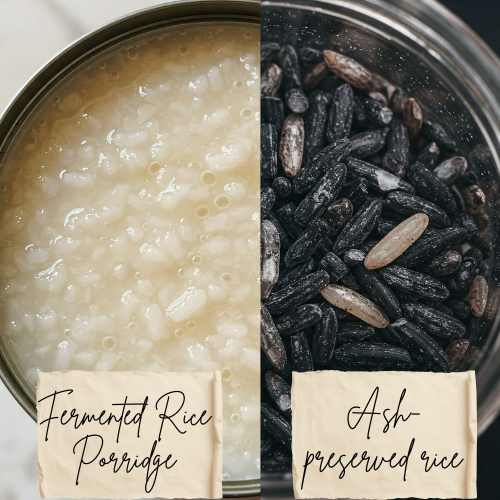
Here’s how I make it: Rinse and steam short-grain rice, mix in koji spores, and let it ferment in a 90°F closet for 48 hours. The result? A bubbly, gut-healthy base I dehydrate into powder and stash in jars. During flu season, I reconstitute it with hot water and ginger—no yogurt or kefir needed.
Ash-preserved rice sounds bizarre until you try it. I line a clay pot with oak ash (hardwood only—softwoods contain toxic resins), layer raw rice and ash, then seal it with a waxed cloth lid.
The ash alkalizes the rice, preventing bacterial growth. After six months buried in my root cellar, the grains cook up fluffier than modern parboiled rice. My kids call it “viking rice,” and it’s survived five years in storage without a single weevil.
Related: Why You Should Bury Your Food in Ash
Then there’s heirloom rice and dried meat bricks. I compress cooked Carolina Gold rice (an heirloom variety with a 15-year shelf life) with jerky made from my pasture-raised pork.
Using a fruit press, I squeeze the mix into dense, palm-sized blocks. One brick boiled in water feeds two adults, and the fat from the meat infuses the rice with calories.
And when I want something dead simple, I pull out a pouch of this beans and rice survival soup that can last up to 10 years! I made up a few batches with oxygen absorbers and tucked them into the pantry. Tried one last month after a full year on the shelf. It was hearty, filling, and exactly the kind of meal you’d want when everything else runs low.
Modern Homestead Easy Rice Meals
I’ll admit it: Eating the same rice-and-beans combo for weeks made my family mutiny.
That’s when I started experimenting with modern shelf-stable recipes that balance nutrition, flavor, and homestead practicality. These aren’t your grandma’s rice dishes—they’re survival food reinvented.
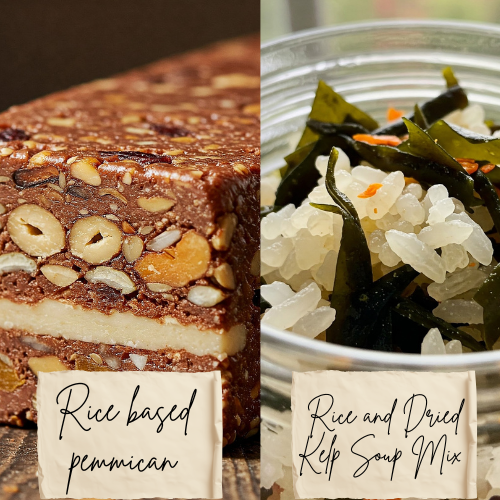
Take Rice-Based Pemmican 2.0. Traditional pemmican uses dried meat and fat, but I mix 2 cups of rice flour, 1 cup rendered beef tallow, and a half-cup of powdered crickets (yes, crickets—they’re 65% protein and thrive in DIY insect farms).
If you’ve never rendered your own fat before, don’t worry. It’s easier than you’d think. I learned by following the same method the Amish have used for generations, and I found it here. They don’t waste a thing, and their method gives you clean, shelf-stable fat you can use in cooking, salves, or survival food like this rice-based Pemmican.
Press the dough into bars, wrap them in wax paper, and store them in ammo cans. One bar packs 400 calories and stays edible for 5+ years. My teens grab these during haying season, and they’ve never complained about the “bug flour” once I added smoked paprika.
Dehydrated Harvest Casserole Kits save me during planting season. Layer parboiled rice, home-dried tomatoes (slice them thin, salt heavily, and dry in a $20 dehydrator), and powdered goat cheese in a Mason jar.
Add a tablespoon of powdered bone broth to the mix. When you’re ready to eat, pour boiling water into the jar, wait 15 minutes, and you’ve got a creamy, savory meal. I’ve kept these kits in my pantry for three years, and the rice still absorbs flavor like it’s fresh.
Rice and Dried Kelp Soup Mix solves two problems: boredom and iodine deficiency. I forage kelp from clean coastlines (or buy it dried), grind it into flakes, and mix 1 part kelp to 4 parts rice.
Add a teaspoon of lemon zest powder per cup to cut the oceanic tang. Boil the mix with water, and you’ve got a thyroid-supporting soup in 20 minutes. Kelp’s natural salts preserve the rice, so no need for oxygen absorbers.
Solar-Cooked Rice Crisps turn leftovers into snacks. Spread cooked rice thin on a baking sheet, sprinkle with salt and nutritional yeast, and let a solar oven dehydrate it for 8 hours. The result? Crunchy chips that last 2+ years in airtight jars. I’ve used 5-year-old rice for this—no one notices the difference.
Preserving Your Rice Meals Like a Pro
I’ve ruined my fair share of rice. Early on, I assumed tossing cooked rice into a jar was enough. Two months later, I opened a science experiment of mold. Now, I use three preservation methods that guarantee shelf stability—no fancy equipment required.
Freeze-drying at home sounds impossible without a $2,000 machine, but I’ve hacked it with a cooler, dry ice, and patience.
Related: Canning VS. Freeze Dry
Spread cooked rice on parchment-lined trays, place them in a cooler, and pour crushed dry ice (-109°F) around the trays. Seal the cooler loosely (to let CO2 escape) and wait 24 hours.
The rice freeze-dries into crunchy pellets that rehydrate instantly. I’ve stored these in Mylar bags with oxygen absorbers for 10+ years. Pro tip: Freeze-dried rice works best in soups or ground into flour for baking.
Canning rice stews in bone broth is my go-to for ready-to-eat meals. Raw rice can harbor botulism spores, so always pressure-can rice dishes. I mix parboiled rice, dried veggies, and powdered venison bone broth (simmered from last season’s hunt), then pack jars loosely.
Process pints at 10 PSI for 75 minutes. The rice absorbs broth as it stores, becoming tender without turning mushy. USDA guidelines warn against canning plain rice, but adding acidic ingredients like tomato powder or vinegar drops the pH to safe levels.
Mistakes That Ruin Shelf-Stable Rice Meals
Three mistakes turn shelf-stable rice into wasted effort—and wasted food. I’ve made all of them, so learn from my blunders.
First, using non-food-grade buckets invites chemical contamination. Regular storage bins leach plasticizers like BPA into grains over time. Test yours by filling one with hot water for 24 hours. If the water tastes plasticky, ditch the bucket.
Second, ignoring pest-resistant herbs guarantees infestations. Bay leaves repel weevils, but only if you use enough. I add six fresh leaves per 5-gallon bucket, crushed to release their oils.
Many of the same herbs I grow for medicine are also fantastic for keeping my pantry safe from pests. I’m talking about herbs like lavender, chamomile, yarrow, and more that you can find in Nicole Apelian’s Medicinal Garden Kit. Each one with a secret talent for protecting food.
Lavender has a strong scent that keeps insects away. And if you’ve ever had trouble with weevils, try adding dried yarrow or feverfew to your rice storage. Trust me, your pantry will thank you.
For moths, layer dried neem leaves between rice sacks—their bitter compounds deter egg-laying. Last year, I skipped neem in one bucket and lost 20 pounds of jasmine rice to larvae.
Third, skipping oxygen absorbers cuts shelf life by 80%. Rice stored without absorbers lasts two years max before turning rancid. With absorbers, I’ve eaten 15-year-old rice that tasted fresh. Use 300cc absorbers for 5-gallon buckets and seal within 30 minutes to prevent moisture creep.
Here’s the oddball error most miss: Storing rice near kerosene lamps or fuel cans taints its flavor. Fumes penetrate even sealed containers. I kept rice in my workshop for a winter, 10 feet from a lantern. After a year, it tasted like diesel. Now, I store all grains in a separate shed with charcoal air filters.
10 Canning Recipes From The Amish
How To Build An Electricity Free Amish Fridge (Video)
Do NOT Store Your Dry Goods Like This
How to Dry Can Beans and Rice for 20+ Years Shelf Life
Fermented Foods for Gut Health: A Guide to Building Immunity and Self-Sufficiency

